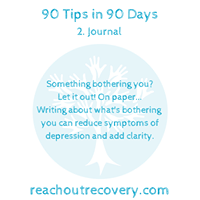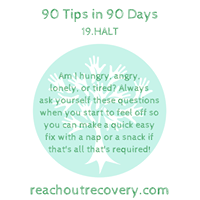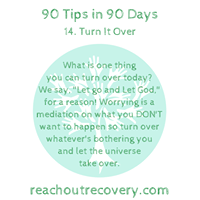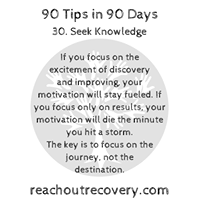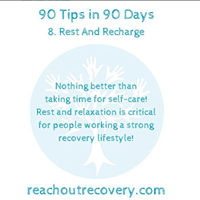Leslie Glass's Blog, page 334
September 24, 2018
The Toxic Past: A Survival Guide
I started crying the other day while I was hiking. It just happened, and before I knew it, tears were rolling down my face. I finally stopped and took off my glasses to wipe my face just as this nice-looking guy passed me. Both of us with our dogs, dressed all sporty, in shape and on top of a mountain on a brilliant morning in Southern California. But there I stood, with the pain in my heart written all over my face. He looked at me with concern but also curiosity, and I felt caught, exposed, and embarrassed, so I knelt down next to my dog and pretended to do something. He passed, and I stood up and pulled myself together. Sort of.
“What happened to her?” he must have thought. “Did someone die? Is she sick? What could have caused her to crumble like that in such a beautiful setting on such a beautiful day?”
How could I have possibly explained that it wasn’t anything, in particular, that day that made my soul ache? It was just my toxic past.
It was the decades of stuff that occasionally surfaces, particularly at this time of year. I never talk about the specifics of my story anymore because it doesn’t matter and continuing to retell those stories only gives them power when they don’t have any hold over me anymore. But, I did have a therapist at one particularly dark time in my life who told me, “There will be some days you will cry for the rest of your life. That’s just how it’s going to be, and you’ll have to learn how to take care of yourself when those moments come up.”
So, there I am on top of the mountain sobbing. Why?
Because I’m a survivor of trauma, addiction, deaths of beloved friends and boyfriends and sometimes it still hurts.
Some days there are people I miss and relationships I mourn. Rage and sadness spills out, but I don’t need to use over it anymore. That’s the good news. It passes pretty quickly. That’s the other good news, but I do need an action plan.
In moments of despair I:
Talk about my feelings with someone. Anyone I feel safe with will do, but I don’t keep it locked inside.
I keep active. There’s a reason I’m on top of that mountain, or in boot camp, as many times a week as my schedule and body permits.
Eat well. My brain needs it to function correctly. This is not a joke. I used to get so annoyed when people would bitch at me to eat regularly and nutritionally and now I know I feel awful when I don’t. Anxious, hangry, stressed are not good for me.
Take a break. If I feel overwhelmed I turn everything off for an hour, a day, a week, as long I can/need.
Care for others, animals, be of service, whatever I can do to get out of myself and my head for an hour a day.
For me, the recovery plan has to account for the fact that there will be bad days.
It’s not enough to have smart feet that take me to the right places. I need to know how to mend my heart and nourish my soul at a moments notice. These are just some of the tools I use. Find the ones that work for you—nature, animals, cooking, meditation—all of these things make me happy. Start by using the ones above and making a list of the things you like to do. With practice, it becomes second nature 
September 23, 2018
Forgiveness Doesn’t Remove Boundaries
In examining our own boundaries we may realize that others have hurt us in some way. If we offer forgiveness, does that invite people to hurt us again?
There may have been physical, sexual, emotional, or spiritual neglect or abuse as well as small hurts received through everyday living such as telling you something about yourself you don’t want to hear or forgetting your birthday or the anniversary of your marriage.
Forgiveness In Smaller Hurts
For these small hurts, forgiveness is usually fairly easy. Forgiveness can be about just letting go of the slight by recognizing we all say and do stupid things at times; it can be about telling the other person we were hurt; or it can be about holding on to resentment.
In keeping healthy boundaries, we decide who we want in our lives. Remember that boundaries are about where I begin and end with other people and boundaries are about “yes means yes and no means no.” Rigid boundaries are too strong as they don’t let anyone or anything into your life; very porous boundaries let in too much; but healthy boundaries give or take by letting in the positives and keeping out the negatives.
Forgiveness In Difficult Hurts
So we need to look at the possibility of forgiveness for our more difficult problems. We know that keeping grudges can keep us stuck in a negative outlook. The Big Book of AA discusses how resentments keep us sick as when we resent someone and don’t deal with this, the anger and pain can become overwhelming – hurting only ourselves and not the person who harmed us.
In this manner, we stay focused on our bitterness, hostility, and possibly wanting revenge. It may also cause us to become anxious, depressed, and in a perpetual state of grieving with no end in sight. If this happens, we may find ourselves missing out on life and love as we are so wrapped up in our trauma.
Do We Have To Forgive?
Numerous studies as well as our religious institutions focus on forgiveness as a path for healing ourselves as well as others. For example, Johns Hopkins expert Dr. Karen Swartz relates that forgiveness can help lower your risk of a heart attack as well as your cholesterol levels, help with sleep, and reduce pain and blood pressure, as well as decrease anxiety, depression and stress (www.hopkinsmedicine.org). Our religious and spiritual beliefs also see forgiveness as an important path to take for healing. But is forgiveness for everyone?
We do not have to forgive for there may be concerns where forgiveness is not possible. Think of a teenager who was gang raped or a father who just lost his entire family in a drunk-driving wreck; is it a must for these people to forgive?
No. In fact, early on in recovery from such horrors, it may be counter-indicated to forgive as it can be a way to deny the pain and horror. So do not feel that you have to forgive. In time, you may find yourself wanting to forgive and this can be healthy especially if you first begin by choosing to forgive someone in order to heal yourself.
First Signs Of A Healthy Boundary
Healing yourself first is the sign of a healthy boundary for you cannot forgive someone else until you have dealt with the issues yourself. Letting go of anger, pain, resentments and grief can thereby lead to forgiveness – or not.
If you choose to forgive, it needs to be on your terms. Forgiveness may be related to not only coping with your own pain, but also keeping yourself from being harmed in any other manner. You can offer compassion to yourself and the other person; you can set healthy boundaries by setting limits on others or by deciding to not continue a relationship that is toxic.
Forgiveness Does Not Remove Boundaries
In such forgiveness, we do not make excuses for the other nor do we ignore the pain. But we can let go of the anger and resentments – feelings that can keep us trapped. We can seek counseling for help or lean on our religious/spiritual beliefs and practices to help us to go on. But we do not blame ourselves nor do we begin the path to forgiveness if we’re not ready, and for some, this readiness to forgive others may never come.
Yet if we focus on our own healing, that is forgiveness in itself for we are setting boundaries and taking care of ourselves.
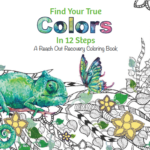 Did you know the 12 Steps, which have helped millions find recovery, can also help you find peace and serenity? Check out our latest book, Find Your True Colors In 12-Steps.
Did you know the 12 Steps, which have helped millions find recovery, can also help you find peace and serenity? Check out our latest book, Find Your True Colors In 12-Steps.
The post Forgiveness Doesn’t Remove Boundaries appeared first on Reach Out Recovery.
Newborn Opioid Withdrawals Require A ‘Cascade Of Care’
From Science News Daily: A new study reports that effective management of neonatal abstinence syndrome (NAS) — withdrawal symptoms occurring in infants exposed to opioids in utero — requires a coordinated ‘cascade of care’ from prevention through long-term follow-up.
Effective management of neonatal abstinence syndrome (NAS) — withdrawal symptoms occurring in infants exposed to opioids in utero — requires a coordinated “cascade of care” from prevention through long-term follow-up, reports a study in Advances in Neonatal Care, official journal of the National Association of Neonatal Nurses. The journal is published in the Lippincott portfolio by Wolters Kluwer.
Based on interviews with frontline providers caring for infants affected by NAS, the researchers identify four essential areas to improve care for this increasingly common complication of opioid use. “Greater resources, coordination, and cross-disciplinary education are urgently needed across the cascade of care to effectively address NAS,” write Jennifer L. Syvertsen, PhD, MPH, of the University of California, Riverside and colleagues at the University of Southern California.
Critical Areas to Improve Care for Infants Exposed to Opioids
Neonatal abstinence syndrome (NAS) can result from legally prescribed opioid medications, misuse of prescription opioids, illicit drugs such as heroin, or medication-assisted therapy to treat opioid use disorders, including Suboxone or methadone. Infants exposed to any of these forms of opioids during gestation are at risk of NAS, developing signs and symptoms of opioid withdrawal after birth. Timely and effective care can lower the impact and costs of NAS. However, standardized care and treatment resources are often lacking, both for women and their infants affected by NAS.
The researchers conducted in-depth interviews with 18 central Ohio healthcare providers caring for infants and families affected by NAS. Ohio has among the highest rates of opioid use and NAS in the United States. In 2015, nearly 2,200 infants were hospitalized for NAS, at a cost of over $133 million. “Rather than an acute diagnosis, we propose that NAS is better conceptualized as cascade of care — and there is a need to better coordinate and provide care at each stage of the cascade,” Dr. Syvertsen and coauthors write. Informed by analysis of the provider interviews, the researchers discuss four interrelated components of the cascade of care:
Prevention
Care begins with preventing the misuse of opioids and other drugs. Preventive efforts should encompass the “social determinants of health” such as poverty, lack of education, and limited opportunities. “Although there is an urgent need for prevention programming and drug treatment, current resources do not meet the demand,” the researchers write.
Prenatal Care And Drug Treatment
The providers stressed the need for supportive care for pregnant women using opioids, rather than punitive approaches. While comprehensive care programs have yielded promising results, NAS can occur even in infants born to mothers receiving recommended medication-assisted treatment for opioid use disorder. “Barriers in communication and a shortage of integrative prenatal programs to address opioid use in pregnancy often leave women confused and frustrated about a subsequent NAS diagnosis at the hospital,” Dr. Syvertsen and colleagues write.
Labor And Delivery
Infants must be monitored for signs of NAS, with treatment if needed; providers stressed that consistency in following protocols is critical to reducing infant length of stay in the hospital. Programs to sensitize staff and mitigate stereotyping attitudes toward the mothers of babies with NAS have led to better care. In rural areas, the infant has to be transported to a higher-level newborn intensive care unit, creating barriers to mother-infant bonding.
Aftercare
Supportive aftercare includes access to drug treatment and social services, monitoring the child’s development, and providing a healthy home environment for the infant to thrive. The providers cited variations in policies and procedures, noting that available resources are stretched to the limit. While services are available for pregnant women, all too often they “shut down” after delivery.
“Our current focus on the period of pregnancy alone is insufficient to address the complexity of NAS,” Dr. Syvertsen and colleagues write. Their article provides examples of interview quotes illustrating each of the four elements of the cascade of care and important subthemes.
Dr. Syvertsen and coauthors highlight the need for programs and policy at each stage of the cascade, toward the critical goal of stemming the tide of NAS. They conclude: “Unless we make a serious political commitment to create fair drug policy, adapt a more integrative approach to addressing NAS, and adequately support the initiatives that we know can work, NAS incidence will continue to rise and devastate communities.”
The post Newborn Opioid Withdrawals Require A ‘Cascade Of Care’ appeared first on Reach Out Recovery.
September 22, 2018
US Life Expectancy Drops Due To Drugs, Alcohol and Suicide
From Jamie Ducharme @ Time: Young Americans are dying in rising numbers because of drugs, alcohol and suicide, according to new federal data. The Centers for Disease Control and Prevention’s National Center for Health Statistics (NCHS) issued its annual comprehensive health and mortality report, which analyzes trends in death rates by cause and demographic.
Drugs, alcohol and suicide, the report says, have contributed to the first drops in U.S. life expectancy since 1993. While U.S. life expectancy rose from 77.8 to 78.6 years between 2006 and 2016, the trend reversed during the end of the decade, leading to a 0.3-year decline between 2014 and 2016 — in large part because of rising rates of drug overdoses, suicide and liver disease, as well as Alzheimer’s.
Death rates for Americans ages 15 to 44 rose by around 5% each year between 2013 and 2016, and drugs, alcohol and suicide are chiefly to blame, the CDC report says.
Drug overdoses alone killed more than 63,600 people in 2016, the report says. Among men ages 24 to 35, overdose rates rose by more than 25% each year between 2014 and 2016; nearly 50 out of every 100,000 deaths in this population were overdose-related by 2016. Women ages 45 to 54 had the most overdoses overall, but those ages 15 to 24 saw the highest rate of increase: about a 19% jump per year between 2014 and 2016.
Alcohol is also a major public health concern. Liver disease replaced HIV as the sixth-leading killer of adults ages 25 to 44 in 2016. Among men and women ages 25 to 34, deaths from liver disease and cirrhosis increased by about 11% and 8% per year, respectively, between 2006 and 2016. Older adults, however, still die of liver disease at much higher rates than young adults.
Suicide, meanwhile, is on the rise in nearly every demographic — but a few trends emerged. Suicide is now the second-leading cause of death among people ages 15 to 24, increasing by 7% in this group each year between 2014 and 2016. It’s also the third-leading cause of death among people ages 25 to 44, accounting for almost 17 of every 100,000 deaths in this population in 2016. Suicide rates even rose among children ages 1 to 14, increasing around 9% each year during the study period — though suicide was the cause of fewer than one of every 100,000 deaths in this group in 2016.
And while men still die by suicide much more frequently than women, increasing rates among young women are starting to narrow that gap. Suicide rates among young and teenage girls rose by 70% between 2010 and 2016, according to previous CDC data.
Nearly three-quarters of the Americans who died in 2016 were older than 65. Rates of many common killers decreased in this population during the preceding decade; deaths from heart disease and cancer, the top two killers of adults older than 65, both declined, as did those from strokes.The exception, however, was Alzheimers, the death rate of which rose by 21%. According to separate CDC data released Thursday, that trend is likely to continue. The number of people affected by Alzheimer’s and related dementias is projected to double by 2060, rising from 5 million people (1.6% of the U.S. population) in 2014 to an estimated 13.9 million people (3.3% of the population) in 2060, according to the CDC.
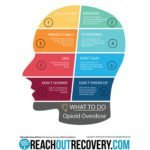 Today, this poster is as timely and important as CPR and Heimlich maneuver instructions. Anyone who sees ROR’s Overdose Poster will read it again and again and learn what to do in an emergency. Poster size: 18″ by 24″. Order yours today!
Today, this poster is as timely and important as CPR and Heimlich maneuver instructions. Anyone who sees ROR’s Overdose Poster will read it again and again and learn what to do in an emergency. Poster size: 18″ by 24″. Order yours today!
The post US Life Expectancy Drops Due To Drugs, Alcohol and Suicide appeared first on Reach Out Recovery.
September 21, 2018
Alcohol Abuse Kills 3 Million A Year, Most Are Men
From Kate Kelland @ Reuters: More than 3 million people died in 2016 due to drinking too much alcohol, meaning one in 20 deaths worldwide was linked to harmful drinking, the World Health Organization (WHO) said on Friday.
More than three quarters of these deaths were among men, the U.N. health agency said. And despite evidence of the health risks it carries, global consumption of alcohol is predicted to rise in the next 10 years.
“It’s time to step up action to prevent this serious threat to the development of healthy societies,” the WHO’s director-general, Tedros Adhanom Ghebreyesus, said in a report. “Far too many people, their families and communities suffer the consequences of the harmful use of alcohol.”
In its “Global status report on alcohol and health 2018”, the WHO said that globally, an estimated 237 million men and 46 million women are problem drinkers or alcohol abusers. The highest prevalence is in Europe and the Americas, and alcohol-use disorders are more common in wealthier countries.
Of all deaths attributable to alcohol, 28 percent were due to injuries, such as traffic accidents, self-harm and interpersonal violence. Another 21 percent were due to digestive disorders, and 19 percent due to cardiovascular diseases such as heart attacks and strokes.
An estimated 2.3 billion people worldwide drink alcohol, with average daily consumption of people at 33 grams of pure alcohol a day. This is roughly equivalent to two 150 ml glasses of wine, a large (750 ml) bottle of beer or two 40 ml shots of spirits.
Europe has the highest per person alcohol consumption in the world, even though it has dropped by around 10 percent since 2010. Current trends point to a global rise in per capita consumption in the next 10 years, the report said, particularly in Southeast Asia, the Western Pacific and the Americas.
“All countries can do much more to reduce the health and social costs of the harmful use of alcohol,” said Vladimir Poznyak, of the WHO’s substance abuse unit. He said proven, cost-effective steps included raising alcohol taxes, restricting advertising and limiting easy access to alcohol.
Worldwide, 45 percent of total alcohol consumed is in the form of spirits. Beer is the second most popular, accounting for 34 percent of consumption, followed by wine at 12 percent.
The report found that almost all countries have alcohol excise taxes, but fewer than half of them use other pricing strategies such as banning below-cost sales or bulk buy discounts.
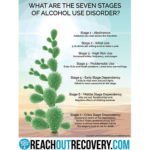 Alcohol is still the king of addictions, killing more than 88,000 Americans each year. ROR’s Stages of Alcohol Use Disorder Poster is a clever yet neutral way to share facts about this cunning and baffling disease.
Alcohol is still the king of addictions, killing more than 88,000 Americans each year. ROR’s Stages of Alcohol Use Disorder Poster is a clever yet neutral way to share facts about this cunning and baffling disease.
The post Alcohol Abuse Kills 3 Million A Year, Most Are Men appeared first on Reach Out Recovery.
Healthy Boundaries 101
We read so much about boundaries and how important they are, but what exactly are healthy boundaries? A boundary is a setting that you place on yourself and others to keep you safe and healthy. Boundaries exist in all relationships including personal boundaries regarding what you see as right and wrong, boundaries with others including family and friends, and boundaries at work.
What Are Healthy Boundaries?
With healthy boundaries, we know where we begin and end and where another person begins and ends. With our boundaries, yes means yes and no means no. If we violate our boundaries, we feel it in a negative sense, such as being overwhelmed, angry, resentful, and distraught. When we set healthy boundaries we also feel it but in a positive way such as feeling strong, competent, and perhaps even pleased and happy.
I Am Allowed To:
Feel what I feel. Feelings aren’t right or wrong, they just ‘are.’
Think what I think
Make mistakes
Change my mind
Let go of others’ expectations of me
Feel happiness and joy as well as sadness and hurt
Say ‘no’ and stick with this boundary
Set boundaries with others. They might not like these boundaries, but they’re my right to set.
I Have The Right To:
Set boundaries for myself regarding my own values, morals, ethics, and beliefs
Set age appropriate boundaries with my children
Not feel guilt or shame for setting healthy boundaries
Be free of physical, emotional, sexual, and spiritual neglect or abuse
Use legal actions if abuse has occurred
I Can:
Choose how to respond to others’ – with anger or acceptance, hurt or healing.
Decide what to accept with others and what not to accept.
Celebrate for living a healthy life.
Only ‘fix’ myself, not others, nor am I responsible for ‘fixing’ them.
Choose how to live my life. Even if others’ think I’m living it poorly, it is still my choice to make both good and bad decisions.
Say ‘yes’ when I am ready
Trust my judgement
I Am Responsible For:
My feelings, but not the feelings of others. Setting boundaries may hurt someone, but it is their choice in how to respond to my boundaries.
My own happiness. It is not someone else’s responsibility to make me happy.
Setting boundaries in a compassionate, respectful manner
Being respectful to others when I say ‘no’
I Am Not Responsible For:
Anticipating others’ needs; they are responsible in telling me about this.
Everyone that surrounds me (children being the exception). But even with children, I choose my responsibilities and explore their responsibilities.
Setting Boundaries Is Only The First Step
If someone violates my boundaries, I have the right to confront them, reset the boundaries, and possibly, end the relationship if my boundaries are consistently violated.
Boundaries can be rigid, flexible, or too loose. By examining the above list, we can all see how to utilize flexible boundaries and to decide who and what enters our lives. It is our choice and our responsibility.
 Did you know the 12 Steps, which have helped millions find recovery, can also help you find peace and serenity? Check out our latest book, Find Your True Colors In 12-Steps.
Did you know the 12 Steps, which have helped millions find recovery, can also help you find peace and serenity? Check out our latest book, Find Your True Colors In 12-Steps.
The post Healthy Boundaries 101 appeared first on Reach Out Recovery.
September 20, 2018
Michael Phelps On Mental Health: I Struggle Like Everybody Else
From Alice Park @ Time: Now, when 28-time Olympic medalist Michael Phelps swims butterfly, it’s usually for an audience of one. When his 2-year old son Boomer waves his arms in imitation of the stroke, he knows what the toddler wants to see. “He knows the motion of the butterfly,” says Phelps. “So I do a couple of laps.”
Since leaving competitive swimming after the 2016 Olympics in Rio de Janiero, Phelps has been enjoying retirement in Arizona with his wife Nicole and sons Boomer and Beckett, seven months. He’s also become an advocate for water conservation (he’s in his second year as global water ambassador for Colgate, working to remind people to turn off the faucet while brushing their teeth) and mental health awareness, and has openly discussed his struggle with depression.
“For me to know there are a lot of people out there in the world who are struggling the same exact way I do still struggle and have struggled — I’m a human being. But I was so used to compartmentalizing everything,” he says. “Being an athlete you’re supposed to be this strong person who doesn’t have weaknesses, doesn’t have any problems. No, that’s wrong. I struggle through problems just like everybody else does. I wanted to open up and just talk about it. It is what makes me who I am.”
Phelps says he now sees the “red flags popping up when I’m starting to go down that path,” and knows when to reach out to his wife or therapist. “Communication is something I really just learned, just to be completely wide open,” he says. “I joke that I learned how to communicate when I’m 30. But I did. And it’s better late than never.”
Those skills are making the connections he has with the U.S. national swim team stronger as well; he admits that at the first of his five Olympic Games, he probably wasn’t as approachable as he was during his last Olympics in Rio. “I think it’s crazy that in the four previous Games people did not reach out to me because I was probably a little different, and hard to approach then,” he says. “But going into [the 2016 Games] I was able to kind of relax, let my guard down a little bit and enjoy the experience. It was the first time I ever talked to everybody on the national team. That might be why I’m being approached more, and I like that. I want to help continue to grow the sport.”
It’s a new role for Phelps, who welcomes the responsibility, and applauds other athletes who are using their visible positions to advocate for issues that are important for them. “For me, to be able to have that power, to have people listen to you and to open up and speak about things that are important to me whether that is mental health or saving water; that’s amazing,” he says. “I never thought people would sit and listen to me, or care about what I was saying. It’s pretty incredible to have that voice and be able to spread my message as loud as I can to get people to really open up, understand what is actually going on and what we are doing to the world we live in, no matter what it is.”
Just don’t expect him to be racing again at the next Olympics in Tokyo in 2020. Now, he just laps the pool as an escape. “It’s the only time it’s peaceful, quiet and I can escape in my own head and let go of whatever I need to let go of,” he says. “I always thought of myself as a swimmer and that’s it. Now I try to think of myself more as a human. And that’s a good way to live.”
 Did you know the 12 Steps, which have helped millions find recovery, can also help you find peace and serenity? Check out our latest book, Find Your True Colors In 12-Steps.
Did you know the 12 Steps, which have helped millions find recovery, can also help you find peace and serenity? Check out our latest book, Find Your True Colors In 12-Steps.
The post Michael Phelps On Mental Health: I Struggle Like Everybody Else appeared first on Reach Out Recovery.
People Like You More Than You Think, A New Study Suggests
From Time Magazine:
You may not get a second chance at making a first impression — but a recent study suggests that you probably don’t need one anyway.
The research, published in the journal Psychological Science, finds that people often underestimate how much another person likes them after they meet for the first time.
“I always have this sneaking suspicion that maybe my conversation partner didn’t like me or enjoy my company as much as I liked them or enjoyed their company,” says Gus Cooney, a social psychologist at Harvard University who co-authored the paper with Erica Boothby, a postdoctoral psychology researcher at Cornell University. “Is it just me?” he wondered. “Or is it everybody?”
Cooney’s research suggests it’s the latter. The researchers ran a series of experiments in which two people met and talked for the first time, then rated their own conversational performance and the other person’s. Across conversations of varying lengths, some with topics provided and others without, the researchers found that people consistently rated their conversation partner as more likable and enjoyable to talk to than they rated themselves.
Shy people were especially prone to the “liking gap,” Cooney says, but it happened across personality types. There was even evidence, gathered through a study that surveyed college suitemates over an academic year, that the misperception persists beyond first interactions, potentially lasting months or more.
Since it’s impossible for both people in a conversation to be the more likable one, Cooney says this finding suggests that we treat new acquaintances more kindly than we do ourselves — and that people like us more than we think they do.
Several factors are likely driving the liking gap, Cooney says. For one thing, people may be so hyper-focused on their side of the conversation that they can’t accurately gauge how the other person is feeling. “We don’t know what other people are thinking, and so we substitute our own thoughts about ourselves for what other people think,” Cooney explains. “We’re basically projecting what we think of our own performance, and assume that’s what other people think of us.”
People tend to be harder on themselves than they are on new acquaintances. After a conversation, you can look back on everything you said wrong and mentally correct it, or remember instances when you were funnier, kinder or more eloquent. You don’t have the same mental catalogue for someone you’ve just met, so you may “take them more at face value and be much more charitable,” Cooney says.
That’s a potential problem, since underselling yourself socially may promote sadness and anxiety, or cause you to miss out on valuable personal interactions, Cooney says. While the study didn’t look into strategies for overcoming the liking gap, Cooney says simply knowing it exists is a good place to start.
“We always have this post-mortem with ourselves. That little voice in your head turns on, and you start thinking about your conversation,” Cooney says. “Be suspicious of this voice and its accuracy.”
Another new study, published in Nature Human Behavior, supports this type of social pep talk. It found that when a person makes a positive first impression, the other person remembers it — but when an initial meeting goes poorly, the other person is ready and willing to change his mind and give him another chance.
That research was based on a hypothetical scenario in which a stranger either electrically shocked another person for money — creating a wholly negative first impression — or turned down the cash out of concern for the other person. Study participants were willing to give even the electrical shockers a second chance at making a good impression, the researchers found — so after a normal conversation, devoid of electrical shocks, you’ll probably do just fine.
The post People Like You More Than You Think, A New Study Suggests appeared first on Reach Out Recovery.
Codependency Relapse: Step 1, We Meet Again
I’ve been in recovery for a few years now, and I thought I had it all together. Then BAM! Without warning, I had a relapse and my life is once again unmanageable. Here’s what sent me back to Step 1 and how I’m dealing with it.
What A Drug-Free Relapse Looks Like
I struggle with codependency, so when I relapse, I return to behaviors. My behavior of choice is control. I want to control every detail of my life, starting with everyone else’s behaviors. This week’s “victim” was my teenage son Keith. (Although I feel like the real victim here.) Keith regularly lies to me and tries to manipulate me into catering to his every whim. I don’t give in, but the strength it takes to stand up to this kid is ridiculous. Some days, I feel like he’s a narcissistic vampire who’s sucking the life out of me.
I felt my grip to control HIM tighten like a noose around MY neck.
Before I knew it, we were feeding off of each other’s need for control. I finally reached my breaking point late Tuesday night and turned Keith over to my husband’s jurisdiction.
Relapse Warning Signs
For several months, I thought I was just having a some bad days. I tried a few things to get me back on track, but nothing brought back the serenity I experienced in early recovery. Researchers Terence T. Gorski and Merlene Miller identified a set of warning signs or steps that typically lead up to a substance or alcohol use relapse. I was surprised at how many of these relapse warning signs were also present in my relapse.
1. Change In Attitude
This warning sign specifically refers to a change in attitude regarding my recovery program. It’s the one warning sign I didn’t have. I’m still going to meetings every week and talking to my sponsor.
2. Elevated Stress
I knew I was stressed, but I didn’t know how to deal with it. In the last six months, our family bought a new house, totaled a car, and one of us is a teenager. I kept saying my life is unmanageable, but I thought it would pass – on it’s own without any change from me. Another clue I needed to take Step 1. If nothing changes then nothing changes.
3. Reactivation Of Denial
The reactivation of denial isn’t denying the addictive behavior. It’s denying the elevated STRESS from the prior warning sign. Seriously, this warning sign is a flaming red flare that I completely missed. I was in complete denial as a few bad days here and there melted into bad weeks.
4. Recurrence Of Withdrawal Symptoms
Withdrawal symptoms like anxiety, depression, sleeplessness and memory loss can occur long after a person quits drinking or using substances. I find this warning sign so interesting because I suffered from all of these withdrawal symptoms for years. Once I entered recovery, they subsided. The sleeplessness has crept back into my nights, and my anxiety is off the charts, yet I had no idea they were telling me I was in real trouble.
5. Behavior Changes
In early sobriety, we often make positive changes to replace compulsive behaviors. One of my early new habits was journaling. I spent hours journaling my about my past, problems, and worries. Slowly, I let that healthy habit go because I was doing so good. I didn’t need it. Apparently, it was more beneficial than I realized. The good news is, at least now I know how to journal. Back when I first found recovery I was actually afraid I would journal wrong. Not all progress is lost.
6. Social Breakdown
This one is huge for me. Before recovery, I was too anxious to drive myself anywhere. I almost never went out with friends and hated talking on the phone. All of those old habits are back. I only have one friend I see once every other month, and my husband drives me to meet her. He also drives me to meetings. Of course, I knew this was happening, but I didn’t realize it’s significance.
7. Loss Of Structure
I must confess, I’ve quit making time for daily reading and reflecting. Since I write about addiction and recovery, I thought my work would count. It hasn’t.
8. Loss Of Judgement
This warning sign includes trouble making decisions, becoming easily confused, and feeling overwhelmed. Check, check, and check. Making decisions is impossible for me right now, and I tell my husband this no less than 20 times a day. Earlier today he asked if I wanted chicken for dinner. It’s already cooked. All we have to do is heat it up, but making this decision was too overwhelming for me.
9. Loss Of Control
This includes making irrational decisions and cutting off people who can help. So, if I’m being honest, I have strongly considered jumping on a plane for Phoenix or L.A., but I haven’t yet. I have completely quit answering any of my son’s questions. My standard answer is, “Ask your Dad.” That might qualify as irrational.
10. Loss Of Options
Typically, loss of options is to quit attending meetings or treatment. I haven’t done that, but I regularly feel like a caged animal ready to attack. I’m highly triggered and actively looking for reasons to lash out at the people I love. This was my life every day before I found recovery. I can’t believe I’m back here again.
Relapse
The final stage is relapse. At first, I thought I could avoid using the R word. Perhaps I could just explain my behavior away as experiencing a new level of awareness, but this isn’t a new hurt or habit for me. It’s the return of many familiar ones.
The good news is this time I know what to do. When I first started, I had no idea what the 12 Steps were or how to examine my motives. I was so enmeshed with my family that I couldn’t even decide what I wanted to eat. This isn’t a total loss. I know which tools helped me in the past and I know where to find them.
I have set a lot of boundaries, and almost all of them are still in place. I haven’t totally abandon my self-care routine, and I have a network of recovery friends. Getting back to serenity will be much faster and easier than it was the first time.
 Did you know coloring can help you find peace and serenity? Check out Reach Out Recovery’s latest book, Find Your True Colors In 12-Steps.
Did you know coloring can help you find peace and serenity? Check out Reach Out Recovery’s latest book, Find Your True Colors In 12-Steps.
The post Codependency Relapse: Step 1, We Meet Again appeared first on Reach Out Recovery.
September 19, 2018
90 Recovery Tips In 90 Days
Need inspiration much? So do we. In fact we need inspiration every single day to keep our recovery in the forefront of our wandering minds. Let’s face it, staying focused isn’t easy. Who doesn’t feel tippy about twenty-five times an hour? Well, we do anyway. We asked Lindsey to give us 90 tips in 90 days this summer to jump start our good intentions for fall. Can you believe she’s up to 52. Yikes. It’s a book. If you haven’t seen all the amazing 90 tips visit ROR’s Instagram page to see the whole collection.
Here are a few of our 5 favorite Recovery Tips for today.
Did you know that writing a few lines a day in a journal helps you understand what’s good, bad, and needs work in your life. Pick up a pen right now.
Most of us go wrong when we’re Hungry, Angry, Lonely, Tired. So here’s a reminder of what’s making us act out now.
Turn it over is a common recovery slogan. Why is it important? Holding on to whatever scares, hurts, or is out of your control ruins your life. Really.
We love learning and doing new things. Knowledge takes us away from just thinking about ourselves. It’s a way to fly.
Yes, you can rest and recharge. Yes you need it. Don’t forget.
The post 90 Recovery Tips In 90 Days appeared first on Reach Out Recovery.

